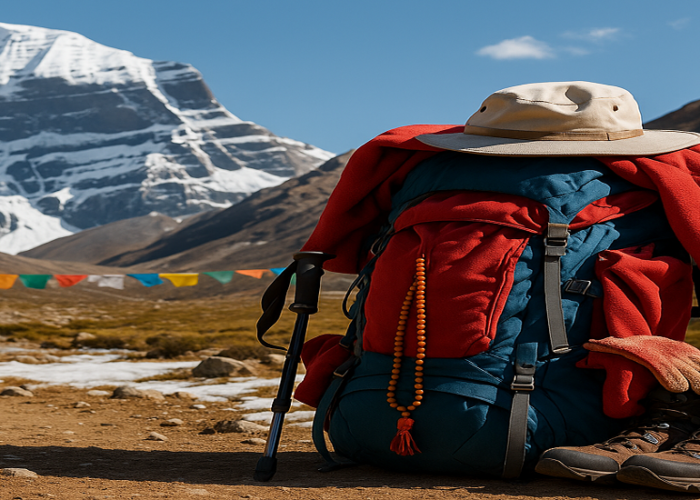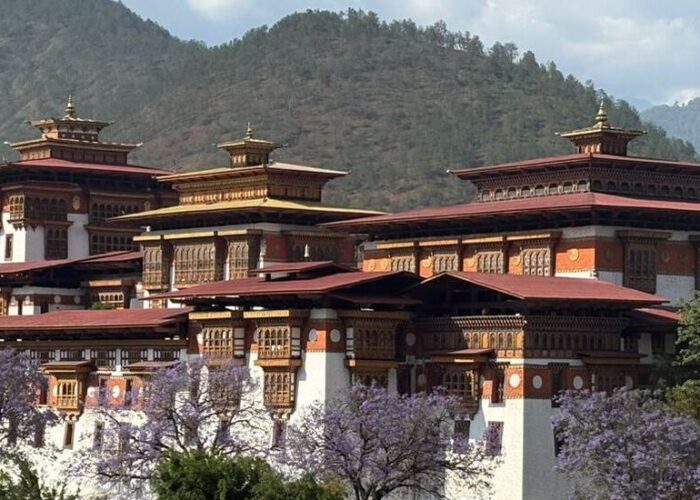The Mount Everest Base Camp trek is among the most demanding yet exciting trips for Indian citizens. It takes trekkers to the base camp of the world’s highest mountain, which is 8,848 meters tall (29,029 feet). The EBC trek is a dream for many adventure travelers, as it offers stunning views. Even more importantly, one can experience the culture of the amazing Sherpa people. This is an achievement because it lies at an altitude of 5,364 meters (17,598 feet) above sea level.
Everest Base Camp Trek for Indian Citizens is beyond a hike; it’s a once-in-a-lifetime experience many keep high on their bucket lists. Standing at the foot of Mount Everest, with the beauty of the Himalayas surrounding him, many would dream of learning about the local culture for years. It is one of the most difficult journeys, with many beautiful scenes and memories to treasure.
But before you pull out your bags, you need to know how much to save up to pack. The trek comes with several costs such as permits, transportation, accommodation, food, and guides or porters. It pays to know what you’re into financially to plan most efficiently and enjoy the trek without any surprises.
Why Choose Everest Base Camp Trek?
Regarding adventure, the Everest Base Camp Trek (EBC) is one of the most popular treks among Indians. It presents all the beauty of the Himalayas, a myriad of cultural experiences, proximity to India, and many other benefits of the EBC trek, thus a perfect trekking destination. Points that represent why the EBC trek for Indians is a popular trekking spot are:
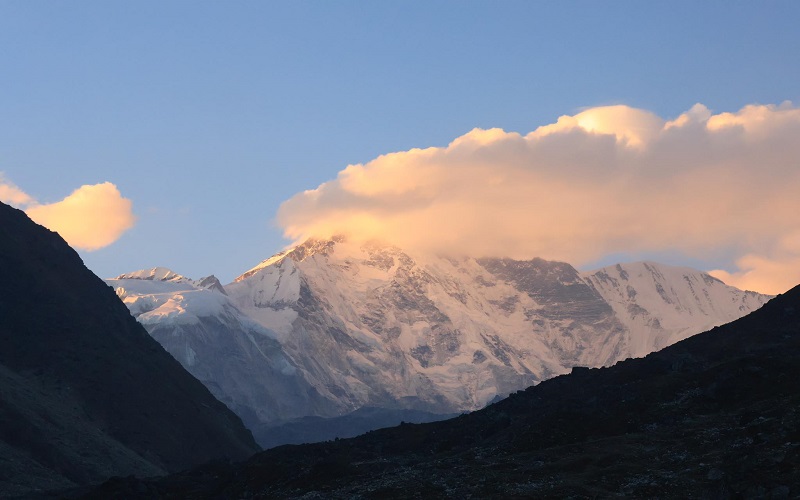
1. Stunning Himalayan views
A stunning view of Mount Everest and Lhotse, as well as many different towering peaks, is seen during the hike, which is the best benefit of the EBC trek. For all hiking-loving people, it is a dream to have such beautiful landscapes and snow-covered mountains up close.
2. Cultural experience
This trek would give you a different taste of the rich Sherpa culture. By visiting ancient Buddhist monasteries and prayer flags, as well as interacting with the local Sherpa, you would have the best and unique experience.
3. Proximity to India.
The Everest Base Camp trek for Indian Citizens is easily accessible. Nepal is just a few hours away by air or road from India, making it that much easier and cheaper for Indian trekkers to access. It’s a good option for those who want to go abroad for adventure without traveling. So, this is another vital reason why the EBC is for Indians.
4. Physical Challenge and Personal Growth
This is another major benefit of the EBC trek because trekking in EBC is challenging and puts a hard demand on willpower. Reaching Mount Everest base camp is an achievement, increasing self-confidence and pride.
Cost Breakdown for Indian Citizens
The Everest Base Camp (EBC) trek has been one of the best trekking destinations in Nepal. The EBC trek cost for Indians in 2025 can vary widely based on the trek period, services opted for, and the season. Below is an in-depth, approximate costing for the EBC trek for Indian trekkers in 2025.
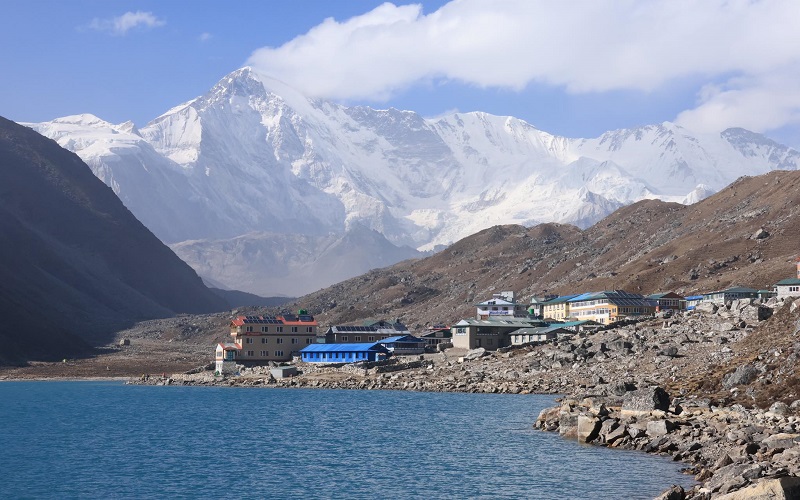
1. Flights (India to Nepal and Lukla flights)
India to Nepal (one-way flight): The average one-way charge from major cities of India, such as Delhi, Mumbai, and Bangalore, to Kathmandu is around INR 10,000 to INR 15,000. The fares may vary with airlines, booking times, and seasons.
Kathmandu to Lukla (one-way flight): The Lukla flight is one of the highlights of the EBC trek. A one-way flight from Kathmandu to Lukla will cost between INR 15,000 to INR 20,000. Tariffs may change, especially in peak trekking seasons.
Total flight cost (one-way): Roughly between INR 15,000 to INR 20,000.
2. Permits (TIMS, Sagarmatha National Park Entry)
- TIMS (Trekkers’ Information Management System): The cost for the TIMS permit for individual trekkers is around INR 625 to INR 1000.
- Sagarmatha National Park Entry Permit: This entry permit is essential for accessing the Sagarmatha National Park and costs approximately INR 1250.
Total Permit Cost: Approximately INR 2,000 to INR 3,000.
3. Accommodation (lodges/teahouses)
Accommodation along the EBC Trek is offered in tea houses and lodges, which are basic yet comfortable places for the trekker’s rest. The average price for a night’s stay ranges between INR 1,200 and INR 15,00 in these tea houses and lodges. This price can vary a little according to altitude, tourist seasonality, and the region’s popularity. Thus, the total cost of accommodation would be about INR 12,000-20,000.
4. Food and Drinks
Food and drinks on the EBC trek cost around INR 700 to INR 1,500 for one. The meals are quite simple as one can be found with options of dal bhat, noodles, or rice. Drinks such as tea, coffee, and bottled water are mostly priced between INR 150-300. Overall, expect to spend around INR 20,000 to INR 30,000 at least on the whole trek for food and drinks, depending on your eating and drinking preferences.
5. Guide and Porter Services
It is highly advisable to hire a guide and porter while trekking to EBC, as they would make the trek safer and more enjoyable. A guide will cost around INR 2,000 to INR 3,500 per day, while a porter would cost approximately INR 1,500 to INR 2,500 per day.
Guides navigate the route and local insights; they take care of the safety while porters carry your heavy luggage so that you can enjoy trekking. Depending on the number of days you trek and other services selected, expect to pay between INR 30,000 and INR 50,000 for the duration of a combined guide and porter from 12-14 days for the trek.
6. Travel Insurance
Travel insurance is probably the most significant aspect of preparation for this trek, EBC. It covers every other unseen occurrence during the journey, namely medical emergencies, injuries, and evacuations. The travel insurance rates usually depend on the coverage and the provider; sometimes, they range from INR 5,000 to 10,000.
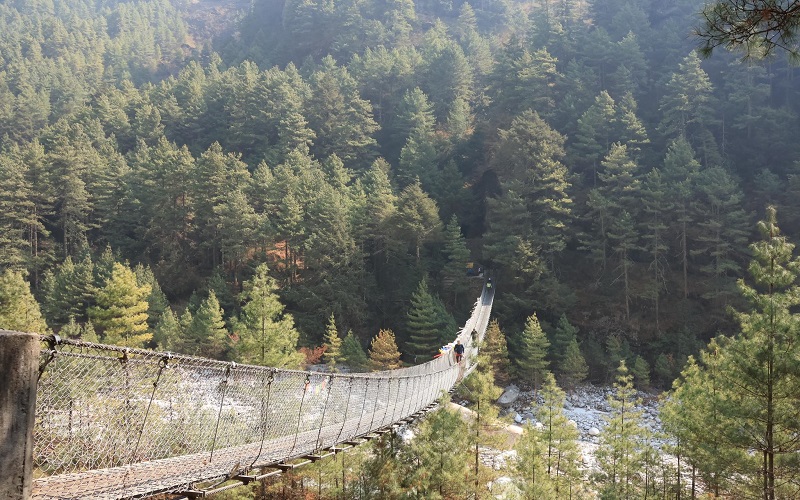
7. Miscellaneous Expenses (gear rental, tips, etc.)
Other than the main costs incurred while trekking the EBC, miscellaneous expenses are for gear rentals, tips, and other small things. Trekking gear such as jackets, sleeping bags, and boots can be rented at a scan price ranging between INR 2,000 and 5,000 for the entire trek. Tipping is, by and large, considered a common practice in addition to your guide and porter; for the guide, it ranges between INR 2,000 and 4,000, and about INR 1,500-3,000 for the porter.
Besides, you may have minor expenses related to small needs such as battery charging, Wi-Fi, or snacking, cutting down on around INR 3,000 to 5,000. Total miscellaneous expenses may incur approximately between INR 7,000 and 13,000.
Total Estimated EBC Trek Cost in INR.
| Cost Category | Approximate Cost in INR |
| Flights (India to Nepal & Lukla) | 25,000 – 35,000 |
| Permits (TIMS & National Park) | 2,000 – 3,000 |
| Accommodation (12-14 days) | 12,000 – 20,000 |
| Food and Drinks | 20,000 – 30,000 |
| Guide and Porter | 30,000 – 50,000 |
| Travel Insurance | 5,000 – 10,000 |
| Miscellaneous Expenses (gear, tips) | 5,000 – 10,000 |
Total Estimated Cost: INR 92,500 to INR 147,500
Additional Costs to Consider
1. Single Supplementary cost
If you are trekking alone and do not want to share a room, a single supplement cost is included for a private room. Depending on where you stay, this would typically add INR1500-4500 per night to EBC trek expenses.
2. Kathmandu Stay for EBC Trek
You will have to spend a few nights in Kathmandu, before and after your EBC trek. Generally, accommodation costs range from budgets of INR 1,200 to 2,500 per night to expensive hotels charging over INR 8,000-10,000 per night. Also, do not forget the cost of meals, transport to the airport, and any other expenses.
3. Costs of equipment for EBC Trek
Specific equipment for EBC trekking includes trekking boots, a warm jacket, a sleeping bag, and a backpack. If you do not have these, the total cost to purchase brand new gear will range from INR5,000 to 40,000. Alternatively, you can rent gear for about INR 500 to 1,200 per day per item.
4. Emergency Evacuation on EBC Trek
The most important hidden cost of the EBC trek is an emergency evacuation. The expenses incurred for evacuation by helicopter due to altitude sickness or injury may range from INR 400,000 to INR 500,000. Travel insurance covering evacuation should be taken to avoid incurring high expenses from your pocket.
5. EBC Trek Helicopter Return Optional
An optional helicopter return to Kathmandu is available to those who want to cover less distance on their EBC trek or need to leave early. This is a bit pricey and can cost anywhere between INR400,000 and 500,000, depending on the location.
Trek to Everest Base Camp and fly back by helicopter — the perfect blend of adventure and luxury! Witness the majestic Himalayas up close and return in style.
https://asianheritagetreks.com/tour/everest-heli-tour/
6. Luxury Lodges on the EBC Trek
Most of the lodges during the EBC trek are simple. There are also luxurious lodges on the way, which are better than other lodges and tea houses. About INR 2500 to 8500+ will cost for such a lodge, depending on the amenities.
Tips to Minimize Costs
If you want to have a budget-friendly EBC trek, there are very quick and easy ways not to miss out on the adventure, as far as saving money is concerned. Here are money-saving tips that will surely help:
1. Book in Advance
Planning is the best way to save money on the EBC Trek. Booking the trek and flights earlier will prevent you from paying higher prices at the last minute and will also help you find better deals on ticket prices. This would help you a lot when you are looking for an affordable EBC trek for Indians, because group bookings or early bird bookings can be cheaper.
2. Share Rooms
Accommodation forms most of the budget in your EBC trek. Rather than paying more for a private room, share with another trekker. It’s a great way to help keep your stay cheap and make your EBC trek affordable. Room-sharing is one of the best budget-friendly EBC trek tips that can save more money.
3. Rent Equipment Instead of Purchasing
You do not need to buy all that trekking gear if you do not have it. For instance, you can rent boots, jackets, and sleeping bags cheaply in Kathmandu or other places in Nepal. Instead of wasting money on costly equipment, rent it to save your money for the EBC trek.
Best Time for Indian Citizens to Trek EBC
The best time for the Everest trek for Indian citizens depends on the weather conditions at Everest Base Camp and the type of experience one desires. Here’s a simple guide:
1. Spring (March to May)
Spring is the best time to go Everest Base Camp Trek for Indian Citizens. The sky is clear and the weather is mild at around 10 to 15 degrees. Amazing wildflowers can be seen. However, it is known to be a busy and expensive time.
Impact on Cost and Experience:
- Costs:
Compared to other seasons, spring tends to be much more expensive in terms of trekking prices (air tickets, permits, accommodation). However, the bright weather, clear visibility, and general lively experience make it worth spending more.
- Trail:
Spring is a peak season, so the trails are busier, but starting early can help you avoid the crowds and still enjoy the trek.
- Crowds:
This time is the main trekking season. Hence, there are bound to be plenty of trekkers all along the route, leading to very crowded teahouses and lodges, especially at prime locations such as Namche Bazaar.
2. Autumn (September to November)
Autumn is also another good season to enjoy the Everest Base Camp trek for Indian Citizens. The weather brings cool and crisp air, ranging from about 5 degrees to about 10 degrees Celsius. It is less crowded than the spring but still fairly charged, with prices being a bit higher. The views are expected to be clear, so trekking should be perfect.
Impact on Cost and Experience:
- Costs:
Autumn is another peak season besides spring. Therefore, airfares and the costs of accommodations and trekking gear become higher; however, the experience is worth the fees.
- Trail:
Autumn is slightly quieter than spring, offering a more peaceful and enjoyable trekking experience with fewer people on the trail.
- Crowds:
There may be heavy foot trails during the season, but not as many as in spring, making it a decent time to avoid crowds.
Low Seasons
The winter months between December and February, as well as the rainy season from June to August, are the least preferred season for the Everest Base Camp trek for Indian citizens. Winter offers fewer tourists and economic costs, but with biting cold and tough conditions, making it accessible only to experienced trekkers ready to handle such a type of adventure in the biting cold.
Monsoon is the least favored because the heavy downpour brings trails that become slippery and visibility also gets poor; hence, though they may be cheaper, it is not advised. The two have fewer crowds, but they both bring severe weather at the same time for trekking.
Cost Impacts (Winter & Monsoon):
- Costs:
Since both winter and monsoon seasons are off-season, the flights, permits, and accommodations are comparatively less expensive. However, that may not be worth it because of the difficulties en route, and trekking may not be as enjoyable and safe.
Trekking Experiences:
- Winter:
The extreme cold is difficult for trekkers not accustomed to high-altitude winter conditions. For most Indians, this is not the best time for the trek.
- Monsoon:
Since there will be continuous showers, muddy trails, and landslides, trekking in the rainy season can prove unsafe as well as uncomfortable. The trek won’t be a comfortable one, especially for Indian trekkers unfamiliar with wet trekking conditions, so it would be preferable to avoid this time.
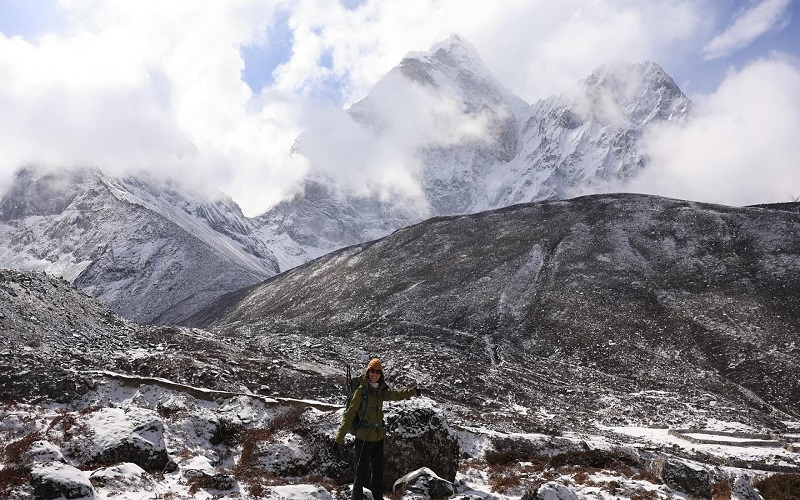
Conclusion:
Getting to the Everest Base Camp trek for Indian Citizens is a dream come true that many can achieve! The trek has very majestic views and rich cultures, and offers the chance to be at the foot of the world’s highest peak—and most crucially, it’s on an affordable deal that Indian nationals can afford.
We understand what Indian trekkers want, and with our experience and local knowledge, we ensure that your booking for the EBC trek progresses smoothly, safely, and hassle-free. Whether you’re a newbie to trekking or a seasoned adventurer, Asian Heritage has an ideal trek for you.
Make Your Everest Base Camp Dream Real
Don’t miss out! Let’s start planning your Everest trek today. Queries or bookings? We are here to help you make the dream of reaching Everest Base Camp come true!
Everest Base Camp Trek: FAQs for Indian Citizens
Is a visa required for Indian citizens?
Indian citizens do not require a visa to go on the Everest Base Camp trek. They need a valid Indian passport or voter ID card. However, they need an entry permit to Nepal, which can be acquired on arrival either in Kathmandu or via any border point.
What currency is accepted during the trek?
The currency in Nepal is the Nepalese rupee (NPR). Some places will accept Indian Rupees (INR), but it’s best to carry Nepali. As you go higher up in the mountains, Indian rupees may not be accepted, so it’s better to get your money exchanged before the start of the trek.
Are there special discounts for Indian groups?
Asian Heritage does not offer a fixed discount for Indian groups, but we do have reasonably good rates and are open to discussing any special offers for group bookings. We aim to make that affordable for all our clients.
What is the average duration of the EBC trek?
The normal duration of the trek to Everest Base Camp is twelve to fourteen days, which includes the number of days spent trekking as well as resting days that help your body acclimatize to the high altitude. The actual treks usually take between nine to eleven days to spend at different places, such as Namche Bazaar and Dingboche, for acclimatization purposes.
Can I pay in Indian Rupees (INR) during the trek?
Though Indian Rupees (INR) may be accepted in a few lower altitude Places, it is better to carry Nepalese Rupees (NPR) for the Everest Base Camp trek and above. Most places don’t accept Indian Rupees, and it can get troublesome to find change. So get your money converted to NPR before or once you reach Nepal.





